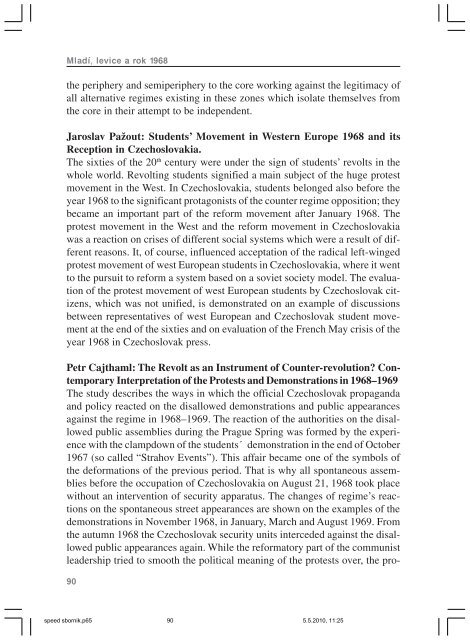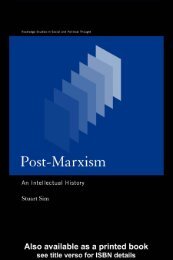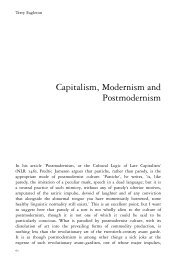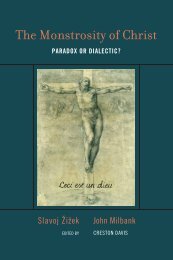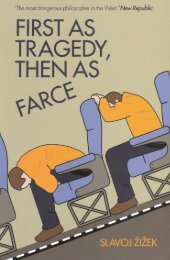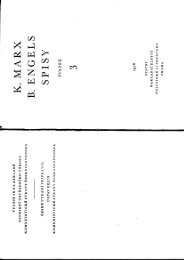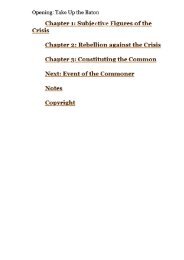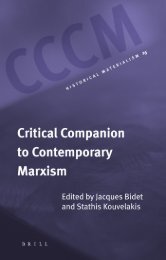Martin Franc-Stanislav Holubec (eds.): MladÃ, levice a rok 1968 - SOK
Martin Franc-Stanislav Holubec (eds.): MladÃ, levice a rok 1968 - SOK
Martin Franc-Stanislav Holubec (eds.): MladÃ, levice a rok 1968 - SOK
You also want an ePaper? Increase the reach of your titles
YUMPU automatically turns print PDFs into web optimized ePapers that Google loves.
MladÌ, <strong>levice</strong> a <strong>rok</strong> <strong>1968</strong>the periphery and semiperiphery to the core working against the legitimacy ofall alternative regimes existing in these zones which isolate themselves fromthe core in their attempt to be independent.Jaroslav Pažout: Students’ Movement in Western Europe <strong>1968</strong> and itsReception in Czechoslovakia.The sixties of the 20 th century were under the sign of students’ revolts in thewhole world. Revolting students signified a main subject of the huge protestmovement in the West. In Czechoslovakia, students belonged also before theyear <strong>1968</strong> to the significant protagonists of the counter regime opposition; theybecame an important part of the reform movement after January <strong>1968</strong>. Theprotest movement in the West and the reform movement in Czechoslovakiawas a reaction on crises of different social systems which were a result of differentreasons. It, of course, influenced acceptation of the radical left-wingedprotest movement of west European students in Czechoslovakia, where it wentto the pursuit to reform a system based on a soviet society model. The evaluationof the protest movement of west European students by Czechoslovak citizens,which was not unified, is demonstrated on an example of discussionsbetween representatives of west European and Czechoslovak student movementat the end of the sixties and on evaluation of the French May crisis of theyear <strong>1968</strong> in Czechoslovak press.90Petr Cajthaml: The Revolt as an Instrument of Counter-revolution? ContemporaryInterpretation of the Protests and Demonstrations in <strong>1968</strong>–1969The study describes the ways in which the official Czechoslovak propagandaand policy reacted on the disallowed demonstrations and public appearancesagainst the regime in <strong>1968</strong>–1969. The reaction of the authorities on the disallowedpublic assemblies during the Prague Spring was formed by the experiencewith the clampdown of the students´ demonstration in the end of October1967 (so called “Strahov Events”). This affair became one of the symbols ofthe deformations of the previous period. That is why all spontaneous assembliesbefore the occupation of Czechoslovakia on August 21, <strong>1968</strong> took placewithout an intervention of security apparatus. The changes of regime’s reactionson the spontaneous street appearances are shown on the examples of thedemonstrations in November <strong>1968</strong>, in January, March and August 1969. Fromthe autumn <strong>1968</strong> the Czechoslovak security units interceded against the disallowedpublic appearances again. While the reformatory part of the communistleadership tried to smooth the political meaning of the protests over, the prospe<strong>eds</strong>bornik.p65 905.5.2010, 11:25


